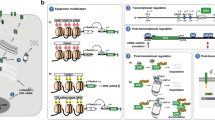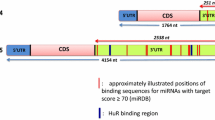Abstract
TRAIL (tumor necrosis factor (TNF) related apoptosis-inducing ligand) has been introduced as an extrinsic pathway inducer of apoptosis that does not have the toxicities of Fas and TNF. However, the therapeutic potential of TRAIL is limited because of many primary tumor cells are resistant to TRAIL. Despite intensive investigations, little is known in regards to the mechanisms underlying TRAIL selectivity and efficiency. A major reason likely lies in the complexity of the interaction of TRAIL with its five receptors, of which only two DR4 and DR5 are death receptors. Binding of TRAIL with decoy receptors DcR1 and DcR2 or soluble receptor osteoprotegerin (OPG) fail to induce apoptosis. Here we describe design and expression in Escherichia coli of DR5-selective TRAIL variants DR5-A and DR5-B. The measurements of dissociation constants of these mutants with all five receptors show that they practically do not interact with DR4 and DcR1 and have highly reduced affinity to DcR2 and OPG receptors. These mutants are more effective than wild type TRAIL in induction of apoptosis in different cancer cell lines. In combination with the drugs targeted to cytoskeleton (taxol, cytochalasin D) the mutants of TRAIL induced apoptosis in resistant Hela cells overexpressing Bcl-2. The novel highly selective and effective DR5-A and DR5-B TRAIL variants will be useful in studies on the role of different receptors in TRAIL-induced apoptosis in sensitive and resistant cell lines.




Similar content being viewed by others
References
Ashkenazi A, Pai RC, Fong S, Leung S, Lawrence DA, Marsters SA et al (1999) Safety and anti-tumor activity of recombinant soluble Apo2 ligand. J Clin Invest 104:155–162. doi:10.1172/JCI6926
LeBlanc HN, Ashkenazi A (2003) Apo2L/TRAIL and its death and decoy receptors. Cell Death Differ 10:66–75. doi:10.1038/sj.cdd.4401187
Ashkenazi A, Dixit VM (1998) Death receptors: signaling and modulation. Science 281:1305–1308. doi:10.1126/science.281.5381.1305
Simonet WS, Lacey DL, Dunstan CR, Kelley M, Chang MS, Luthy R et al (1997) Osteoprotegerin: a novel secreted protein involved in the regulation of bone density. Cell 89:159–161. doi:10.1016/S0092-8674(00)80209-3
Bouralexis S, Findlay DM, Atkins GJ, Labrinidis A, Hay S, Evdokiou A (2003) Progressive resistance of BTK-143 osteosarcoma cells to Apo2L/TRAIL-induced apoptosis is mediated by acquisition of DcR2/TRAIL-R4 expression: resensitisation with chemotherapy. Br J Cancer 89:206–214. doi:10.1038/sj.bjc.6601021
Clancy L, Mruk K, Archer K, Woelfel M, Mongkolsapaya M, Screaton G et al (2005) Preligand assembly domain-mediated ligand independent association between TRAIL receptor 4 (TR4) and TR2 regulates TRAIL-induced apoptosis. Proc Natl Acad Sci USA 102:18099–18104. doi:10.1073/pnas.0507329102
Merino D, Lalaoui N, Morizot A, Schneider P, Solary E, Micheau O (2006) Differential inhibition of TRAIL-mediated DR5-DISC formation by decoy receptors 1 and 2. Mol Cell Biol 26:7046–7055. doi:10.1128/MCB.00520-06
Merino D, Lalaoui N, Morizot A, Solary E, Micheau O (2007) TRAIL in cancer therapy: present and future challenges. Expert Opin Ther Targets 11:1299–1314. doi:10.1517/14728222.11.10.1299
Kelley FR, Totpal K, Lindstrom SH, Mathieu M, Billeci K, de Forge L et al (2005) Receptor-selective mutants of Apo2L/TRAIL reveal a greater contribution of DR5 than DR4 to apoptosis signaling. J Biol Chem 280:2205–2212. doi:10.1074/jbc.M410660200
van der Sloot AM, Tur V, Szegezdi TE, Mullally MM, Cool RH, Samali A et al (2006) Designed tumor necrosis factor-related apoptosis-inducing ligand variants initiating apoptosis exclusively via the DR5 receptor. Proc Natl Acad Sci USA 103:8634–8639. doi:10.1073/pnas.0510187103
Gasparian ME, Ostapchenko VG, Yagolovich AV, Tsygannik IN, Chernyak BV, Dolgikh DA et al (2007) Overexpression and refolding of thioredoxin/TRAIL fusion from inclusion bodies and further purification of TRAIL after cleavage by enteropeptidase. Biotechnol Lett 29:1567–1573. doi:10.1007/s10529-007-9446-y
Kunkel TA (1985) Rapid and efficient site-specific mutagenesis without phenotypic selection. Proc Natl Acad Sci USA 82:488–492. doi:10.1073/pnas.82.2.488
Gasparian ME, Ostapchenko VG, Schulga AA, Dolgikh DA, Kirpichnikov MP (2003) Expression, purification and characterization of human enteropeptidase catalytic subunit in Escherichia coli. Protein Expr Purif 31:133–139. doi:10.1016/S1046-5928(03)00159-1
Schuck P (2000) Size-distribution analysis of macromolecules by sedimentation velocity ultracentrifugation and Lamm equation modeling. Biophys J 78:1606–1619. doi:10.1016/S0006-3495(00)76713-0
Agol VI, Belov GA, Bienz K, Egger D, Kolesnikova MS, Romanova LI et al (2000) Competing death programs in poliovirus-infected cells: commitment switch in the middle of the infectious cycle. J Virol 74:5534–5541. doi:10.1128/JVI.74.12.5534-5541.2000
Hymowitz SG, O’Connell MP, Ultsch MH, Hurst A, Totpal K, Ashkenazi A et al (2000) A unique zinc-binding site revealed by a high-resolution X-ray structure of homotrimeric Apo2L/TRAIL. Biochemistry 39:633–640. doi:10.1021/bi992242l
Wen J, Ramadevi N, Nguyen D, Perkins C, Worthington E, Bhalla K (2000) Antileukemic drugs increase death receptor 5 levels and enhance Apo-2L-induced apoptosis of human acute leukemia cells. Blood 96:3900–3906
Phillips TA, Ni J, Pan G, Ruben SM, Wei Y, Pace JL et al (1999) TRAIL (Apo-2L) and TRAIL receptors in human placentas: Implications for immune privilege. J Immunol 162:6053–6059
Mirandola P, Gobbi G, Ponti C, Sponzilli I, Cocco L, Vitale L (2006) PKCε control protection against TRAIL in erythroid progenitors. Blood 107:508–513. doi:10.1182/blood-2005-07-2676
Gasparian ME, Domnina LV, Ivanova OY, Izyumov DS, Lomakin AY, Popova EN et al (2008) Cytoskeleton inhibitors combined with TRAIL induce apoptosis in HeLa Carcinoma cells overexpressing antiapoptotic protein Bcl-2. Biochemistry (Mosc) 73:358–362
Ashkenazi A (2002) Targeting death and decoy receptors of the tumour-necrosis factor superfamily. Nat Rev Cancer 2:420–430. doi:10.1038/nrc821
MacFarlane M, Kohlhaas SL, Sutcliffe MJ, Dyer MJS, Cohen GM (2005) TRAIL receptor-selective mutants signal to apoptosis via TRAIL-R1 in primary lymphoid malignancies. Cancer Res 65:11265–11270. doi:10.1158/0008-5472.CAN-05-2801
Tur V, van der Sloot AM, Reis CR, Szegezdi E, Cool RH, Samali A et al (2008) DR4-selective tumor necrosis factor-related apoptosis-inducing ligand (TRAIL) variants obtained by structure-based design. J Biol Chem 283:20560–20568. doi:10.1074/jbc.M800457200
Ashkenazi A, Dixit VM (1999) Apoptosis control by death and decoy receptors. Curr Opin Cell Biol 11:255–260. doi:10.1016/S0955-0674(99)80034-9
Griffith TS, Rauch ST, Smolak PJ, Waugh JY, Boiani N, Lynch DH et al (1999) Functional analysis of TRAIL receptors using monoclonal antibodies. J Immunol 162:2597–2605
Ashkenazi A, Herbst RS (2008) To kill a tumor cell: the potential of proapoptotic receptor agonists. J Clin Invest 118:1979–1990. doi:10.1172/JCI34359
MacFarlane M, Inoue S, Kohlhaas SL, Majid A, Harper N, Kennedy DBJ et al (2005) Chronic lymphocytic leukemic cells exhibit apoptotic signaling via TRAIL-R1. Cell Death Differ 12:773–782. doi:10.1038/sj.cdd.4401649
Inoue S, MacFarlane M, Harper N, Wheat LMC, Dyer MJS, Cohen GM (2004) Histone deacetylase inhibitors potentiate TNF-related apoptosis-inducing ligand (TRAIL)-induced apoptosis in lymphoid malignancies. Cell Death Differ 11(Suppl 2):193–206. doi:10.1038/sj.cdd.4401535
Pietro R, Secchiero P, Rana R, Gibellini D, Visani G, Bemis K et al (2001) Ionizing radiation sensitizes erythroleukemic cells but not normal erythroblasts to tumor necrosis factor-related apoptosis-inducing ligand (TRAIL)-mediated cytotoxicity by selective up-regulation of TRAIL-R1. Blood 97:2596–2603. doi:10.1182/blood.V97.9.2596
Perez-Cruz I, Carcamo JM, David W, Golde DW (2007) Caspase-8 dependent trail-induced apoptosis in cancer cell lines is inhibited by vitamin C and catalase. Apoptosis 12:225–234. doi:10.1007/s10495-006-0475-0
Gregorini A, Tomasetti M, Cinti C, Colomba D, Colomba S (2006) CD38 expression enhances sensitivity of lymphoma T and B cell lines to biochemical and receptor-mediated apoptosis. Cell Biol Int 30:727–732. doi:10.1016/j.cellbi.2006.05.004
Kim K, Fisher MJ, Xu SQ, El-Deiry WS (2000) Molecular determinants of response to TRAIL in killing of normal and cancer cells. Clin Cancer Res 6:335–346
Acknowledgments
The authors would like to thank Natalia Magretova and Peter Kalmykov from A. N. Belozersky Institute of Physico-Chemical Biology, Moscow State University for help in analytical centrifugation. The work was supported by Federal Target Programme « Research and Development in Priority Fields of Scientific and Technologic Complex of Russia for 2007–2012» (contract # 02.522.11.2005).
Author information
Authors and Affiliations
Corresponding author
Electronic supplementary material
Below is the link to the electronic supplementary material.
Rights and permissions
About this article
Cite this article
Gasparian, M.E., Chernyak, B.V., Dolgikh, D.A. et al. Generation of new TRAIL mutants DR5-A and DR5-B with improved selectivity to death receptor 5. Apoptosis 14, 778–787 (2009). https://doi.org/10.1007/s10495-009-0349-3
Published:
Issue Date:
DOI: https://doi.org/10.1007/s10495-009-0349-3




